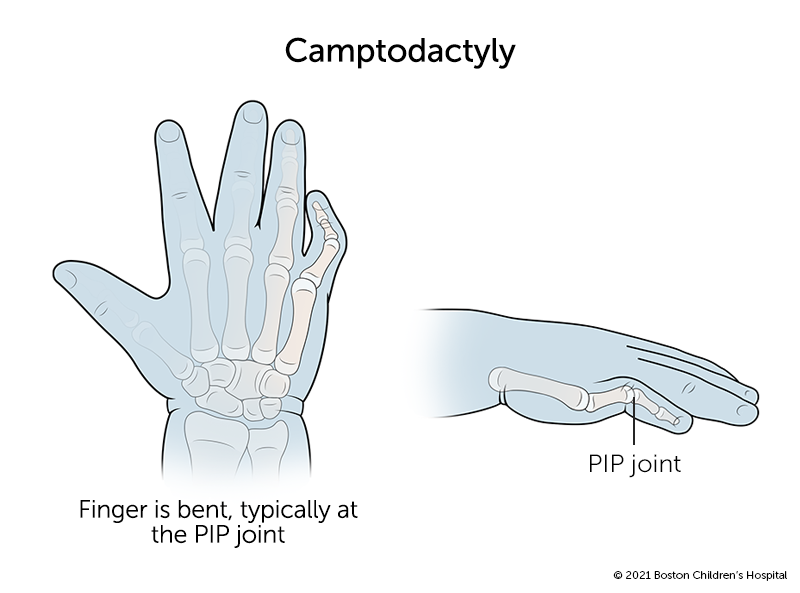Camptodactyly | Symptoms & Causes
What are the symptoms of camptodactyly?
If your child has a mild case of camptodactyly, they may not have any symptoms. Their finger (probably the little one) will be slightly curved, but it won’t affect their use of their hand. If your child has a more severe case, it could slightly affect their hand function.
What causes camptodactyly?
Camptodactyly can be caused by abnormal structures in your child’s finger. These may include:
- tight skin
- contracted tendons and ligaments
- abnormal muscles
- irregularly shaped bones
Most of the time, there is no known reason why this happens. But some children with camptodactyly have a family history of similar finger problems.
Camptodactyly also can also be part of a larger condition or syndrome that affects many different parts of the body.
Camptodactyly | Diagnosis & Treatments
How is camptodactyly diagnosed?
To diagnose camptodactyly, your child’s doctor will go over your child’s full medical history and do a careful physical examination. Your child may have an x-ray to confirm the diagnosis.
How is camptodactyly treated?
Mild camptodactyly rarely causes pain or problems with function, so surgery is not usually recommended. If your child’s condition is mild, your child’s doctor will probably recommend that they wear a splint and receive occupational therapy.
Your child may need surgery if the curve in their finger is more serious, especially if it is getting worse. While surgery can help improve function, your child may still have some curve in their finger. Splinting and occupational therapy are necessary after surgery to prevent stiffness.
How we care for camptodactyly at Boston Children’s Hospital
The Orthopedic Center’s Hand and Orthopedic Upper Extremity Program and our Department of Plastic and Oral Surgery’s Hand and Reconstructive Microsurgery Program have treated thousands of babies and children with camptodactyly and other hand problems. We are experienced treating conditions that range from routine to highly complex, and can provide your child with expert diagnosis, treatment, and care. We also offer the benefits of some of the most advanced clinical and scientific research in the world.
Our Orthopedic Center is nationally known as the preeminent center for the care of children and young adults with a wide range of developmental, congenital, neuromuscular, sports related, traumatic, and post-traumatic problems of the musculoskeletal system.
Our Department of Plastic and Oral Surgery is one of the largest and most experienced pediatric plastic and oral surgery centers anywhere in the world. We provide comprehensive care and treatment for a wide variety of congenital and acquired conditions, including hand deformities.


